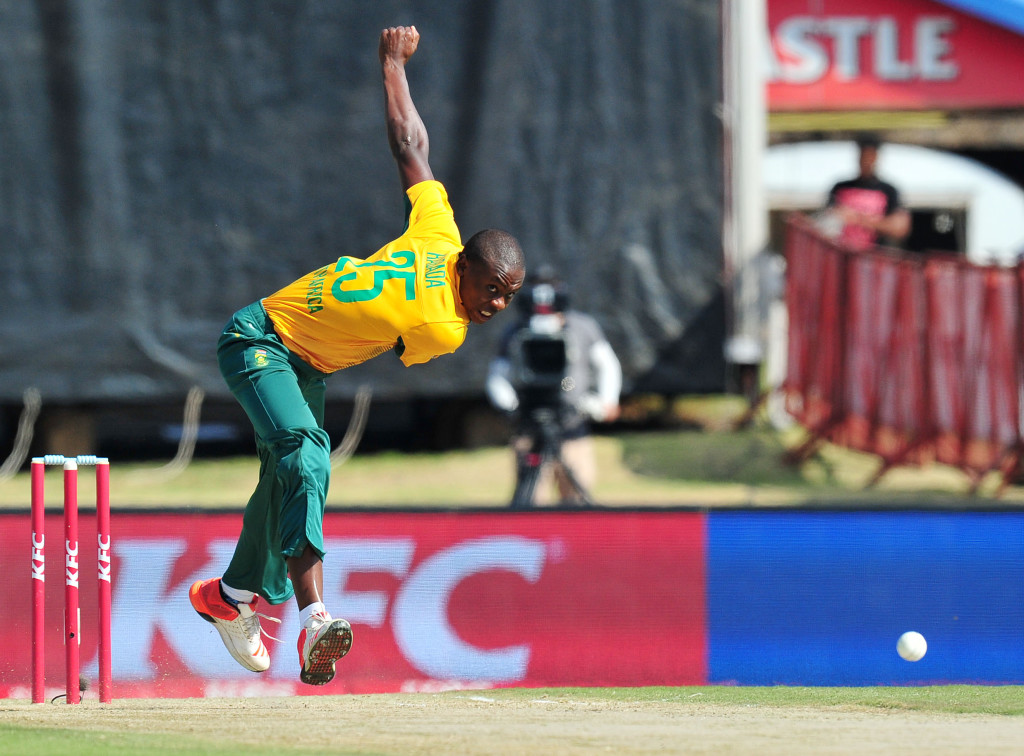After the drawn T20I series against New Zealand, SACricketmag.com looks at five lessons we learned as South Africa build towards next year’s T20 World Cup.
Kagiso Rabada picks himself
The 20-year-old fast bowler is well on his way to establishing himself as one of South Africa’s frontline bowlers and has done well in the shorter formats of the game. Rabada has taken seven wickets in his last three T20I’s and it seems inconceivable that he won’t go to the World Cup. He is still learning his trade, but the only way to develop and improve him is to play him. With Dale Steyn’s involvement in T20 cricket a mystery at the moment, Rabada must be the first bowler on the team sheet going forward. He will only get better and already seems remarkably mature for his age.
Spinners sorted
Imran Tahir and Aaron Phangiso are the favourites to go to India (where the T20 World Cup will be played) as the two spin options. Eddie Leie has done well since making his debut against Bangladesh, but he is not yet better than Phangiso. With JP Duminy evolving more and more into a genuine all-rounder, odds are South Africa will play Tahir or Phangiso with Duminy as the second option. It might even make sense to play two out-and-out spinners in Indian conditions and drop a seamer.
Batting order close to being settled
Quinton de Kock will almost certainly return to the national setup for the tour to India in October and November as should Duminy, who is currently on paternity leave. Duminy’s return means there is only one spot open, probably at No 7, for three candidates in Rilee Rossouw, Farhaan Behardien and David Wiese. It’s a tough choice, but at this stage Rossouw and Wiese should have the edge over Behardien: Rossouw because he offers more with the bat and Wiese because he is an all-rounder who can bowl as a third or fourth seamer. The selectors might be forced to use ODI form as an added measuring stick to determine who the best option is, as it is difficult to rate players over one of two games at a time.
Where to bat AB?
Faf du Plessis has publicly stated that the intention was for AB de Villiers to open the batting in the two T20I’s against New Zealand and keep wicket, but when Du Plessis had to withdraw with a knee injury Morne van Wyk stepped in and those plans were abandoned. Considering that Quinton de Kock is also an opening batsman and a wicketkeeper, having De Villiers open the batting going forward, but not in this series, doesn’t really make sense. What is clear, however, is that De Villiers should bat in the top three, and statistics in the IPL make a favourable argument to bat him at No 3. De Villiers has been at the peak of his powers for a while now, but South Africa should be careful not to become overly reliant on his game-breaking ability.
What’s up with Steyn?
The situation surrounding Dale Steyn’s availability for South Africa in the shortest format remains unclear. It seems as if, like in ODI’s, he basically chooses when he wants to play, which is only in the ‘big, important’ series and tournaments. Steyn should just officially retire from ODI and T20 cricket and focus on Tests. But that doesn’t seem likely and keeping Steyn around for the odd ODI game might still prove beneficial in future. However, T20 cricket is a much shorter format and Steyn is less likely to come in and make a huge difference in that format than he does in one-dayers. With Kagiso Rabada and Morne Morkel picking themselves for the T20 side, that leaves Kyle Abbott as the one to miss out should Steyn be brought in for a World Cup or a series against the Aussies. Seems unfair on Abbott or whoever misses out.







